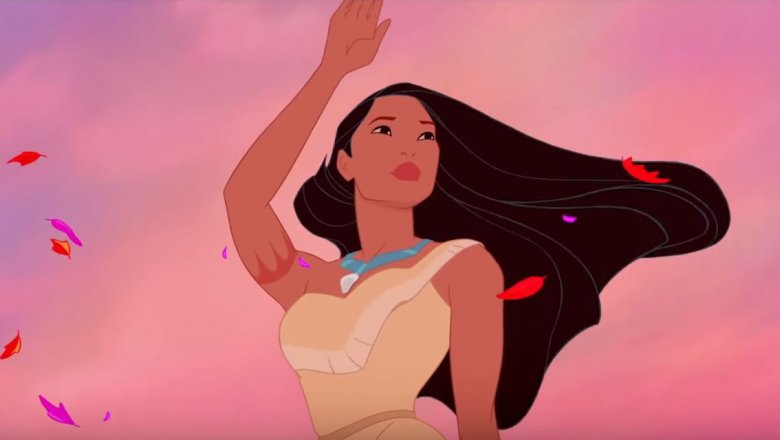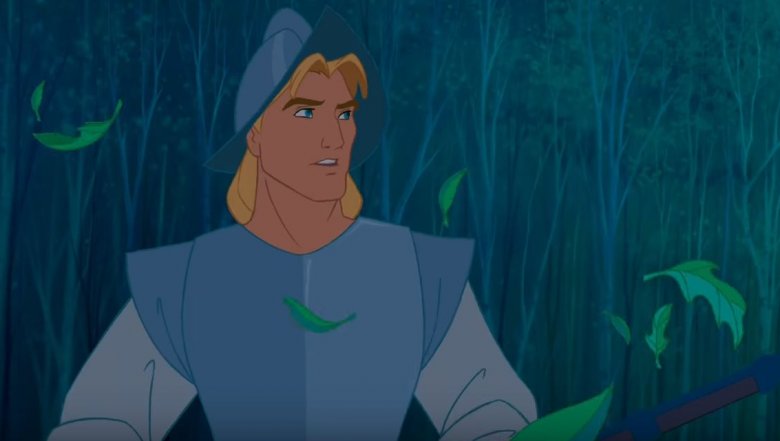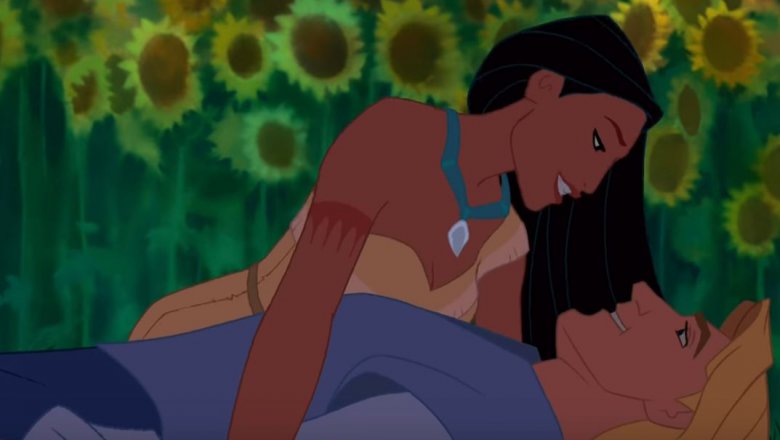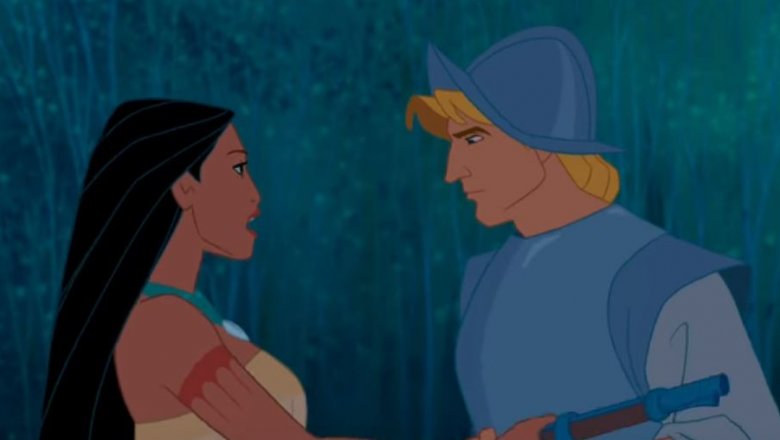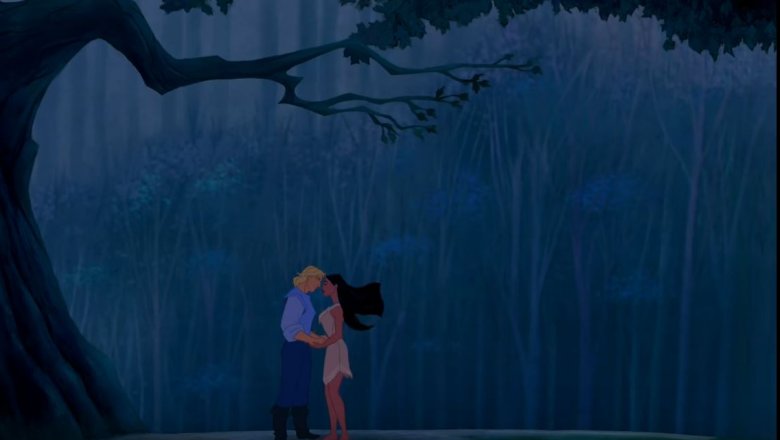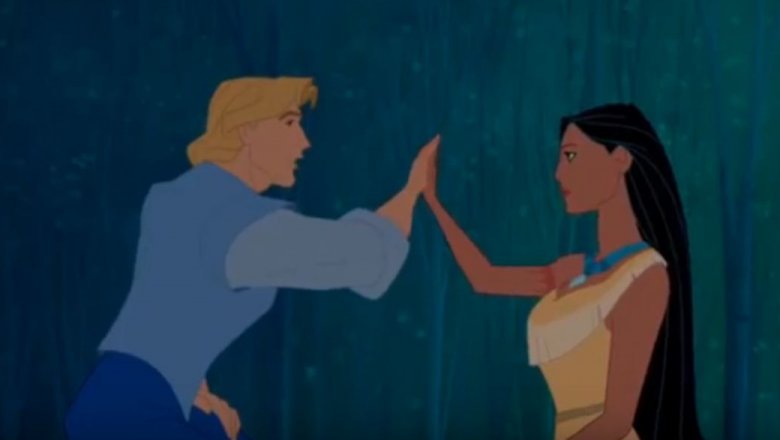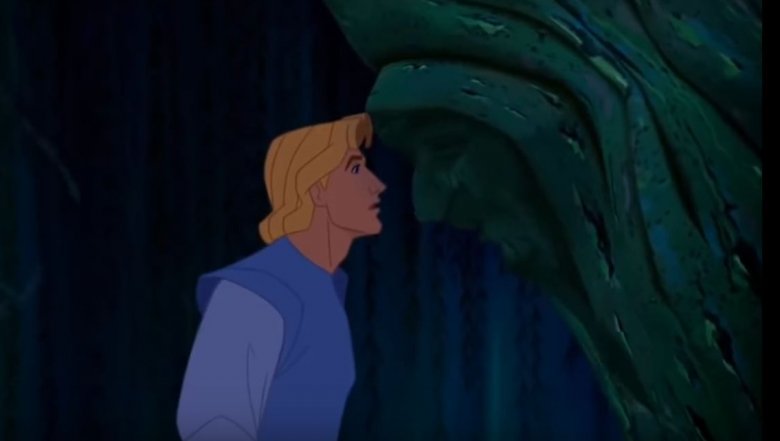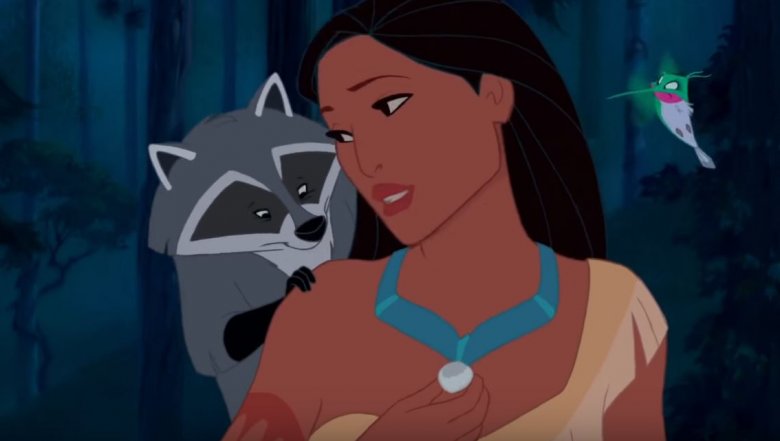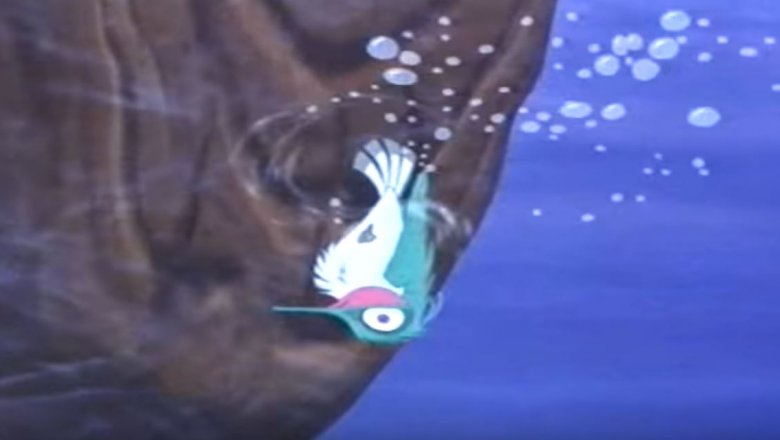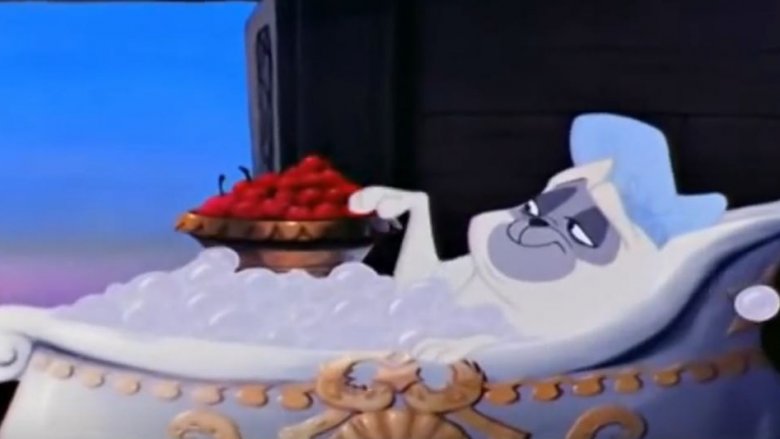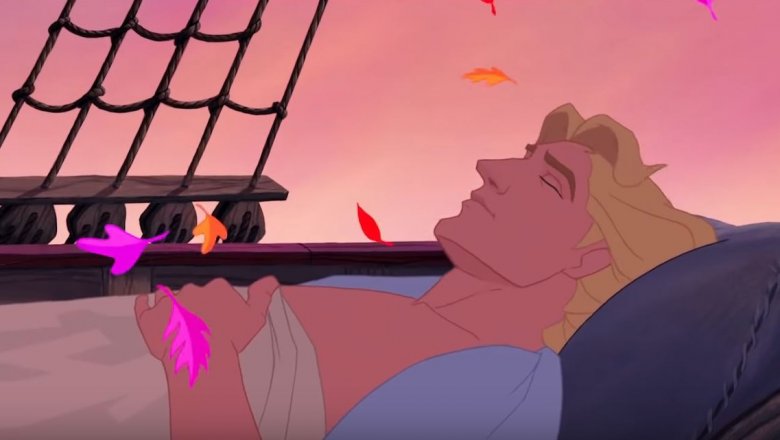Things Only Grownups Would Notice In Pocahontas
When you're a kid, Pocahontas is a heartwarming tale of a young girl who would risk anything for love. There's beautiful imagery, fabulous music, cute animal sidekicks, and a talking tree! Of course, as you get older, the spell that Disney cast fades and you realize that the film is a romanticized portrayal of colonization.
Still, there's plenty to love about the film. While a lot of the content is problematic, we can still praise the fact that the artwork is gorgeous, the music is masterful, and that Pocahontas marked a pivotal moment in Disney history by becoming the first Native American Disney princess. It has been decades since the film was first released, and its good aspects are just as magical as ever. Kids of today are still delighted by the film, but there's quite a big difference between watching a movie as a kid and watching it as an adult, and there are a lot of things in Pocahontas that will leave any adults watching it scratching their heads.
Why does John Smith have an American accent?
Mel Gibson's voice is firm and decisive, making him a great casting choice for the role of John Smith, except for one tiny problem: he's American. Sure, American actors pull off British accents all the time, but Gibson didn't attempt an accent. Instead, he voiced the Englishman with a distinctly American accent. Not only was John Smith not an American, but the American accent as we know it hadn't even evolved yet. The early Jamestown settlers were British and they spoke with British accents.
It's no surprise that Pocahontas isn't historically accurate, but given that it's a Disney film, we wouldn't expect it to be. We would be able to ignore John Smith's historically inaccurate accent if it wasn't so jarring. Since the other members of the Virginia Company speak with modern British accents, John Smith's American accent sounds completely out of place in the movie.
Pocahontas looks way too old for her age
The Pocahontas portrayed in the film is a young woman, old enough for her father to propose a marriage between her and another member of her tribe, Kocoum. Disney leaves us no doubts that she is old enough to enter a consensual romantic relationship with John Smith. In real life, however, Pocahontas was only 11 or 12 years old when the English began colonizing her home. This makes her alleged relationship with John Smith (which was also made up) not just implausible, but downright predatory.
Disney deliberately made Pocahontas older so that they could sell the love story between her and John Smith, never mind the fact that it was historically accurate. "We're doing a mature love story here, and we've got to draw her as such. She has to be sexy," the supervising animator for the movie, Glen Keane, said (via Entertainment Weekly).
A "mature love story"? We thought Pocahontas was supposed to be a children's movie! Which is it, Disney?
John Smith is kind of a jerk
It's not just Pocahontas' real age that makes any sort of relationship between her and John Smith problematic. There's also the fact that her leading man is kind of a jerk. We've got to seriously question her judgement in deriding the handsome, dependable Kocoum as "boring," especially when the guy seems to genuinely love her and clearly respects their shared culture.
John Smith, on the other hand, clearly thinks he is a member of some sort of master race. He views Pocahontas' people as "savages," and tells her that he's there to take all of their (nonexistent) gold. While he does eventually start treating her with basic human decency, it's more likely his raging hormones that are responsible and not some big change of heart. Sorry, but you don't go from singing about killing "Injuns" to viewing them as equals within a couple of scenes just because you meet a pretty girl.
It should go without saying that someone who looks down on your people is not someone you should enter a relationship with. Pocahontas could definitely do better.
Why is Pocahontas always barefoot?
There is a big difference between painting with all the colors of the wind and feeling all of the painful things the forest has to offer on your bare feet. Yet Pocahontas and many other members of her tribe appear to be perpetually barefoot. While it's understandable that she might want to kick off her moccasins for a leisurely stroll, and might want to avoid getting them wet when cliff-diving or going for a canoe ride, she herself admits that she is fond of running "the hidden pine trails of the forest."
While this paints a lovely picture, pine trails mean that the presence of pine cones is inevitable. Pine cones are sharp, prickly things and definitely not something you want crunching underfoot as you are running around. While it might be plausible (although still improbable) that Pocahontas has simply toughened up her feet after years of running around barefoot, it's doubtful that the less adventurous members of her tribe would have built up enough calluses that they wouldn't feel the pain of a pine cone breaking underfoot.
John Smith's surprise at Pocahontas' language skills
What is the deal with John Smith? The guy has a completely unhealthy lack of skepticism. Either he's a few sandwiches short of a picnic or he's totally oblivious to the world around him. How else can you explain the fact that when he first meets Pocahontas he seems surprised that she doesn't speak English? It's a pretty bizarre expectation that someone on the other side of the world who has had no contact with foreigners would speak the same language, and yet John Smith can't believe her lack of English skills.
John can't wrap his head around the fact that Pocahontas doesn't speak English, but is totally on board with the idea that, after she listens to her heart, she is able to speak fluent English in thirty seconds flat. Does he not realize how difficult it is to learn a new language, particularly one as tricky as English?
John Smith doesn't freak out enough when he meets a literal talking tree
Not only is John Smith totally lacking any skepticism, but he also has a disturbing lack of self-preservation. Most people who encounter a talking tree would probably be worried that they were showing signs of a brain tumor or that they perhaps had had a little too much to drink. Not John Smith, though. No, John Smith just rolls with it. He's not even a little bit terrified when introduced to Mother Willow.
At the very least, you'd think that a 17th century Englishman would think there was something witchy going on. The British were no strangers to witch hunts, so it's a bit surprising that someone from a superstitious time and culture doesn't think Pocahontas is in league with the devil when she presents him with a talking tree. Does he just have an incredibly good poker face? Does he think that talking trees actually grow in the New World?
What's the deal with Meeko and Flit?
Okay, we get that Pocahontas is pretty big on nature, but we still can't figure out the deal with Meeko and Flit who seem to be her only friends aside from Naomi. The princess does lead a pretty wild and adventurous lifestyle, what with all the running around and jumping off of cliffs she does, but surely there is at least one human in her tribe who is also a thrill-seeker. Are a raccoon and a hummingbird really the only ones willing to follow her around on her adventures?
And if having pets who follow you around is the norm, why don't any of other members of the tribe have woodland creatures shadowing them? Are Meeko and Flit representing the fact that Pocahontas is different from everyone else? Are they supposed to signify that she's in tune with nature? Either way, we have to feel a little bad for them. They clearly love Pocahontas, but she puts them in some pretty dangerous situations.
How many lives does a hummingbird have?
Speaking of Flit, there is something seriously spooky about the hummingbird. We know that cats have nine lives, but do birds? Flit gets into some incredibly sticky situations thanks to Pocahontas, who seems determined to lead her animal pals into danger. And yet, we never see anyone break so much as a nail (or a feather).
Sure, we could chalk up Flit's incredible survival skills to the fact that it's a Disney film, but Pocahontas doesn't exactly shy away from violence. It's not hard to imagine that a film that would kill off the brave and handsome Kocoum would have any trouble ruffling a few feathers by killing off Flit. Is he simply a particularly agile bird? Did Pocahontas raise him to perform death-defying stunts? Or is he some sort of zombie hummingbird? Alas, Disney has left too much unanswered, leaving us to draw our own conclusions about why this bird never dies.
Pocahontas isn't the aspiration for adults — Percy is
While Pocahontas is the title character of the film and the one who gets to claim the honor of being a Disney princess, Percy the dog is the one who is truly living a fairy tale existence. Pocahontas doesn't even get a happily ever after — the man she loves returns to England, and settlers have invaded her land. Percy, however, is living the life.
Few spas offer the level of pampering that Governor Ratcliffe's pup receives on the daily. The pooch is bathed by a servant, in a luxurious bubble bath no less. Talk about living a royal lifestyle! Sure, Pocahontas might be beautiful and the daughter of a chief, but she has nowhere near the level of freedom Percy does. In fact, her life seems pretty restrictive, and a lot of expectations have been placed upon her by her father and her people. Percy is his own dog and gets to do what he wants all day. What could be better than that?
Why does John Smith have to go back to England?
By the end of the film, John Smith is sent back to jolly old England to recuperate from his wounds. Pocahontas decides not to go with him because she needs to be with her people. Aging Pocahontas several years and having her romantically involved with John Smith was one thing, but it seems that Disney actually remained historically accurate in this one respect. The real-life Pocahontas didn't set foot in England until several years after the movie takes place, and when she did she was married to someone else.
To bring a believable end to the completely made-up love story between Pocahontas and John Smith, Disney had to get pretty creative. Historically speaking, John returning to England with a serious wound would make absolutely no sense. Transatlantic journeys were lengthy and rife with danger. In a time before airplanes, the only way back to England was by boat, and seasickness plus an open wound seem like a bad combination. Even being healthy was no guarantee that you would survive the journey, making John's odds of survival even grimmer. He would have been better off if he had stayed put and let his wounds heal.
